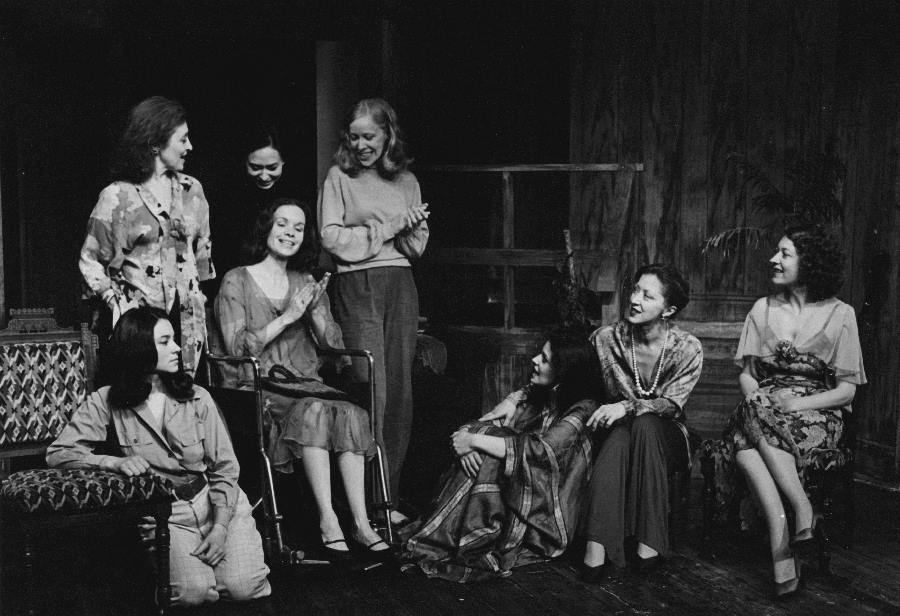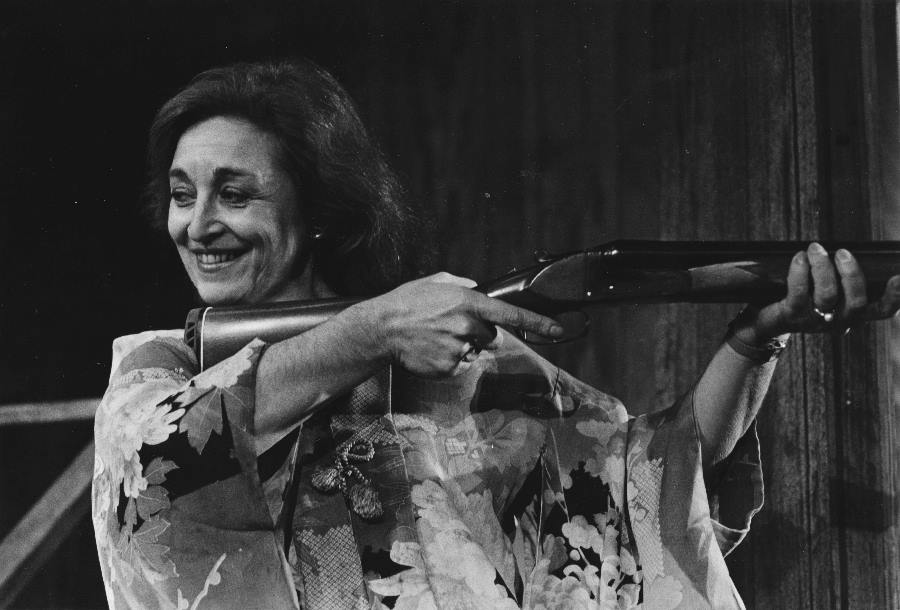This month marks the publication of a new expanded edition of possibly Maria Irene Fornes's most famous play, Fefu and Her Friends, by PAJ Publications. Among the new features of the publication is an extended interview from 1977 with PAJ cofounder Bonnie Marranca. Below is an excerpt from that interview, republished with permission.
 BONNIE MARRANCA: Fefu and Her Friends is a departure from your other plays, which are non-realistic, isn’t it?
BONNIE MARRANCA: Fefu and Her Friends is a departure from your other plays, which are non-realistic, isn’t it?
MARÍA IRENE FORNÉS: My first work on the play actually was less realistic. The play started in 1964. That is when I wrote some of the first scene, when Fefu takes a gun and shoots at her husband out the window…Whether the play is realistic or less realistic has to do with the distance I have from it. I feel that the characters of Fefu are standing around me, while other plays I see more at a distance. When I view a play far away from me, perhaps the characters become two-dimensional. They become more like drawings than flesh and blood. The question of what ends up being a realistic play has to do with the fact that one can feel the characters breathe, rather than in a more abstract play, where it is the play that breathes, not the characters.
Do you feel that each of the eight women is symbolic or representative of a female personality type or quality?
I don’t think so at all. Doesn’t every character in every play have a different character than the next one? The fact that Fefu is plotless might contribute to the feeling that if the women are not related to each other, and not related to the plot, then perhaps they represent certain types. In a plot play the woman is either the mother or the sister or the girlfriend or the daughter. The purpose of the character is to serve a plot so the relationship is responding to the needs of the plot. Although Fefu is realistic, the relationship of the women, in that sense, is abstract. The purposes these characters are serving is different from how a character serves a plot.
How are you distinguishing between plot and plotless plays?
Plot, which has generally been the basis for plays, deals with the mechanics of life in a practical sense, with the mechanics of the peculiar arrangement a society makes. For example, a plot story in Alaska might be that in winter there was more sun than usual, the protagonist is in deep distress and commits suicide. And we would say: Why is that a reason for distress? Then we find out that there is reason for distress when there is more sun because the fish don’t swim close to the surface. Therefore, there is no food and there is a reason for famine. There is a reason for unhappiness, a reason to commit suicide. So in dealing with plot we are dealing with those things that have to do with external life—the mechanics of how we manage in the world. A plotless play doesn’t deal with the mechanics of the practical arrangement of life but deals with the mechanics of the mind, some kind of spiritual survival, a process of thought.
Fefu is a fascinating woman. She seems to be the center of the play, the most complex woman in it. Did the idea of the play grow out of the idea of Fefu?
Fefu took over the play…She is the woman in the first scene that I wrote, the woman who shoots her husband as a game. The source of this play is a Mexican joke: There are two Mexicans in sombreros sitting at a bullfight and one says to the other, “Isn’t she beautiful, the one in yellow?” and he points to a woman on the other side of the arena crowded with people. The other one says, “Which one?” and he takes his gun and shoots her and says, “The one that falls.” In the first draft of the play Fefu explains that she started playing this game with her husband because of that joke. But in rewriting the play I took out this explanation.
The woman who plays such a game with her husband grabbed me. Fefu is complex, but I find her a very unified person. However, by conventional terms she is contradictory—she is very outrageous. Fefu is very close to me, so I tend to understand her and find her not unusual at all.

In some ways Fefu seems Chekhovian—a kind of mood piece. Do you think so?
I think so, even though I didn’t think of Chekhov when I wrote it. I don’t know if one could analyze it technically and find similarities. What would be similarities? The way dialogue proceeds, the presentation of a section of an event. I haven’t studied Chekhov. But I think in spirit it is very Chekhovian, and also, though it is realistic, Fefu is very abstract, as Chekhov is.
Is it a feminist play? Fefu shows women together onstage as they have rarely been seen before.
Yes, it is a feminist play. The play is about women. It’s a play that deals with each one of these women with enormous tenderness and affection. I have not deliberately attempted to see these women “as women have rarely been seen before.” I show the women as I see them, and if it is different from the way they’ve been seen before, it’s because that’s how I see them. The play is not fighting anything, not negating anything. My intention has not been to confront anything. I felt as I wrote the play that I was surrounded by friends. I felt very happy to have such good and interesting friends.
There is a contemporary perspective in the characters. Yet the play is set in 1935. Why?
The women were created in a certain way because of an affection I have for a kind of world which I feel is closer to the ’30s than any other period. Simply because it is pre-Freud, in the way that people manifested themselves with each other there was something more wholesome and trusting, in a sense. People accepted each other at face value. They were not constantly interpreting each other or themselves. Before Freud became popular and infiltrated our social and emotional lives, if a person said, “I love so-and-so,” the person listening would believe the statement. Today, there is an automatic disbelieving of everything that is said, and an interpreting of it. It’s implied that there’s always some kind of self-deception about an emotion.
For me one of the great pleasures of Fefu has to do with your choice of a “natural,” almost effortless performance style. What were you attempting in the direction of the play?
In the process of auditioning there were people who read for me who were extremely talented but I thought they would shatter the play. I began to see the play almost as if it had glass walls and I felt there were people who would break the walls. A lot has been said about the style of acting and the style of production in Fefu, and that surprised me. I told the actors that the style of acting should be film acting. That’s how I saw it. Perhaps when you do film acting onstage it seems very special.
Does Fefu tell us where your future interests in drama lie?
Perhaps it does. However, a great many people have found Fefu to be my most important work, and in doing so I feel that there is a subtle denial of my other plays. I like Fefu very, very much but I feel almost like a mother who’s had eight children and the ninth is called the beautiful one, the intelligent one, and everybody is saying, “Aren’t you glad you had this one?” You feel they are all your children. It could very well be that Fefu is more successful than my other plays and that it would be a clever thing for me to continue writing in this manner. I will if that is my inclination, but not because I feel I have been on the wrong track previously. I don’t see my work in relation to its possible impact in the world of theatre or the history of theatre. The shape that a play of mine takes has to do with my own need for a certain creative output.





